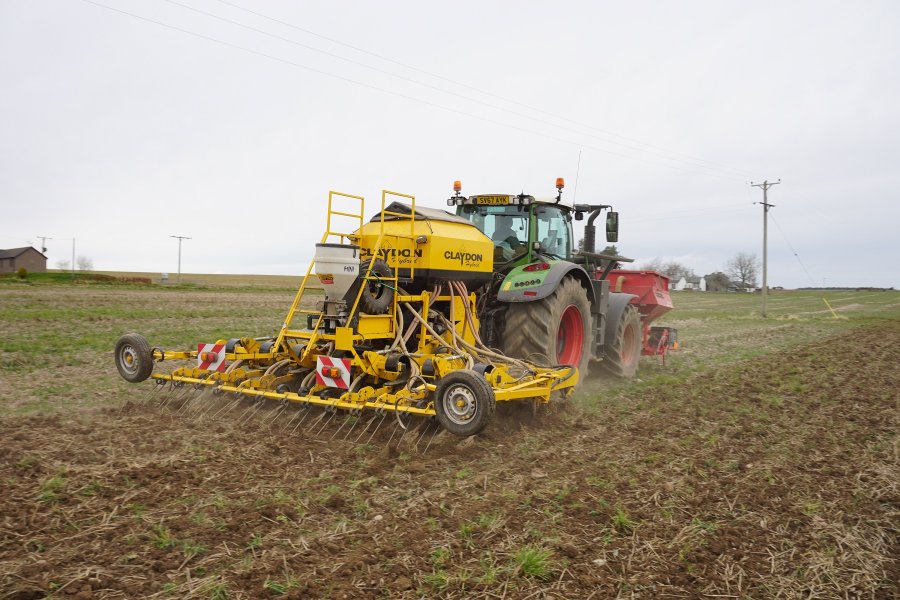
Farmers can save money and help the environment by reducing tillage, but they must also be wary of its pitfalls, according to a climate-friendly farming group.
This is according to the Farming For a Better Climate initiative, run by SAC Consulting, which has been looking at ways of minimising soil disturbance and moving away from ploughing.
Ploughing or ‘inversion tillage’ is well known for its consistent ability to grow uniform crops, come rain or shine.
However, in recent years, strong changes in rainfall patterns during spring sowing – from blisteringly dry winds to prolonged wet periods – have challenged many systems.
One of the biggest benefits of cutting out ploughing is leaving residue on the soil surface to protect it in extreme weather. It also promotes fungi and earthworms, further improving the soil’s resilience.
While reducing tillage can lead to patchy emergence, grass weed accumulation and compaction, it can have the numerous benefits.
Fixed cost reduction
The time-consuming job of ploughing can also impact on a farm’s bottom line. Labour and machinery typically cost between 30% and 36% of a farm’s output and although reducing tillage will not remove this cost, it has the potential to reduce it significantly.
Reducing ploughing, pressing, sowing, and rolling to only sowing and rolling can allow timeliness to be improved as work rates are increased.
A prime example of the importance of timeliness is the establishment of oilseed rape, with August-sown crops consistently outperforming September-sown crops.
Additionally, fixed costs can be reduced through the purchase of smaller machinery. Group member Ben Baron, from Leitfie Farms in Perthshire, recently replaced his 180hp tractor with a newer 130hp model.
He said: “Five years ago, I changed to a low disturbance drill. I would still have a requirement for a big tractor if I was ploughing, but now I simply don’t need anything that size.
"As well as saving money, the smaller tractor is also better for my farm’s soils and is less likely to cause significant compaction issues.”
Building a resilient soil
A resilient soil will be able to function by cycling nutrients, filtering water, and supporting plant growth in dry and wet spells alike.
The process of inverting soil using plough disturbs the complex mycorrhiza in the soil which can make nutrients such as phosphorus available.
It can also destroy the burrows of anecic earthworms – deep-burrowing worms often referred to as ‘natural drainage contractors’.
Hugh Black at Backboath in Angus scored very low in the initial earth worm counts at the start of the Soil Regenerative project, but he has recently noticed how many more worms he is finding after cutting out the plough.
He said: “I have noticed a huge increase in the number of earthworms I am finding, and it’s great to see worms from all three environmental groups.
"I have also noticed the number of adult worms, identified by the ‘saddle’, and I think my soils are better for having more worms.”
???????Not only does reducing tillage promote earthworm numbers, but it can also increase organic matter, improve soil structure, increase infiltration, and prevent runoff. These all make the soil more resilient.
Reduced emissions
Reducing tillage can also reduce a farm’s total emission by lowering diesel use and preventing the erosion of soil carbon through mineralisation.
Agrecalc, SAC Consulting’s carbon calculator, recently added a soil carbon module to its calculations. This indicates that the reduction of tillage to min-till or zero-till can reduce the loss of soil carbon.
However, when a farm combines reduced tillage and perennial cropping it can have the opposite effect and sequester carbon out of the atmosphere.
Zach Reilly from SAC Consulting, who facilitates the group, said: “Reducing tillage is often framed as one of the biggest changes arable agriculture can make to improve its environmental footprint, but it’s sometimes far from straightforward.
“There is no one-size-fits-all approach, and it takes a bold person to cut it out altogether. However, there are a few tips to give it a try, and these can centre around the existing farm rotation.”
